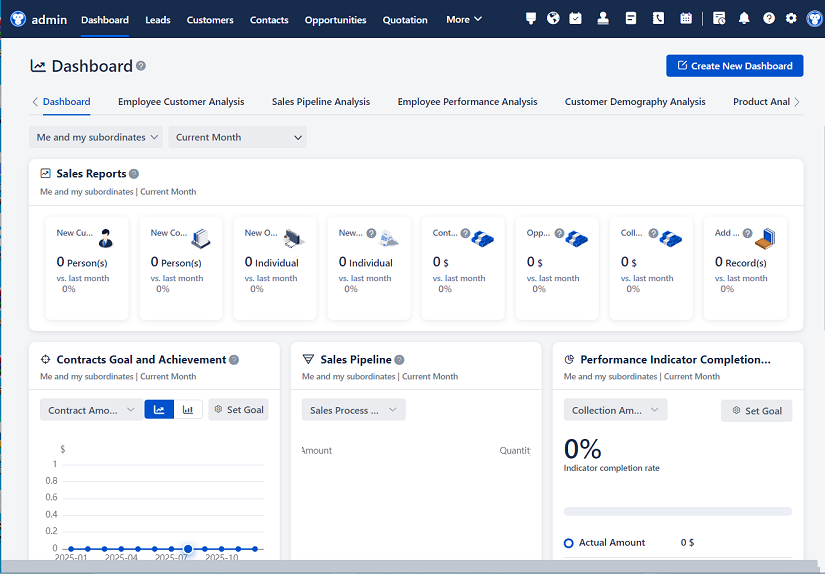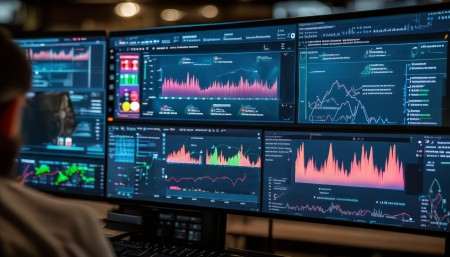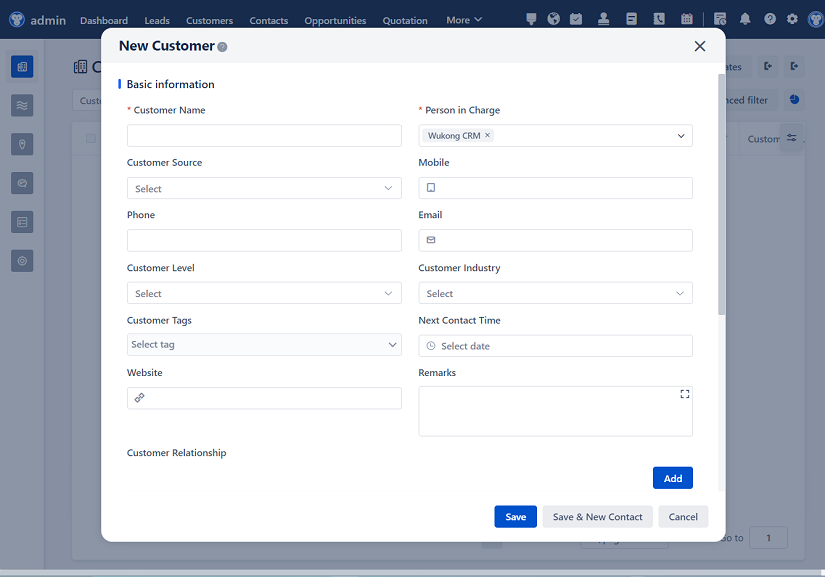
△Click on the top right corner to try Wukong CRM for free
Sure, here’s a 2000-word article on "Can a CRM System Be Monitored?" written in a conversational tone. I'll also include some self-reflective Q&A at the end.
Hey there! So, you’re wondering if a CRM system can be monitored, huh? Well, let me tell you, it’s not just possible; it’s actually pretty common and super important. But before we dive into all that, let’s take a step back and talk about what a CRM system is, just to make sure we’re on the same page.

You know, a CRM, or Customer Relationship Management, system is like a big digital Rolodex, but way more powerful. It helps businesses keep track of their interactions with customers, manage sales, and even handle marketing campaigns. It’s kind of like having a personal assistant for your entire company, but one that never needs a coffee break!
Now, why would you want to monitor a CRM system? Well, think about it this way: if you have a tool that’s so central to how your business operates, you’d want to make sure it’s running smoothly, right? Monitoring a CRM system can help you catch issues early, improve performance, and even spot opportunities to make things better. It’s like keeping an eye on the health of your business.
So, how do you go about monitoring a CRM system? There are a few different ways, and it really depends on what you’re looking to achieve. Let’s break it down a bit.

First off, you can monitor the system’s performance. This means checking things like how fast it’s running, whether there are any errors, and if it’s handling the load of users and data well. Imagine if your computer started to slow down or crash—wouldn’t you want to know why and fix it? The same goes for your CRM. You can use tools like system logs, performance metrics, and even third-party monitoring services to keep an eye on this stuff.
Another thing you might want to monitor is user activity. This is where you look at who’s using the CRM, what they’re doing, and how often. It’s kind of like being a detective, but instead of solving crimes, you’re making sure everyone is using the system correctly and efficiently. For example, you might notice that some users aren’t logging in as much as they should, or that certain features are being underutilized. This can give you insights into training needs or areas where the system could be improved.
And then there’s data quality. This is a big one. Your CRM is only as good as the data it contains, so you need to make sure that the information is accurate, up-to-date, and complete. Think about it: if you have a bunch of outdated or incorrect customer records, how can you trust the insights and reports that come out of the system? Monitoring data quality involves setting up rules and checks to ensure that the data being entered is correct. You can use data validation, regular audits, and even automated tools to help with this.
But wait, there’s more! Security is another crucial aspect of monitoring a CRM system. After all, you’re dealing with sensitive customer information, and you don’t want that falling into the wrong hands. Monitoring security means keeping an eye on who has access to the system, what they’re doing with that access, and making sure that no unauthorized people are getting in. You can set up alerts for suspicious activity, conduct regular security audits, and even use advanced tools like intrusion detection systems to stay on top of things.

Now, I know what you’re thinking: “This all sounds great, but how do I get started?” Well, the first step is to figure out what you want to monitor and why. Are you most concerned about performance, user activity, data quality, or security? Once you’ve got that figured out, you can start looking at the tools and methods that will help you achieve your goals.

For performance monitoring, you might want to look at built-in tools that come with your CRM, or third-party solutions like New Relic or Datadog. These tools can give you real-time insights into how your system is performing and alert you to any issues.
For user activity, you can use the built-in reporting and analytics features of your CRM. Most modern CRMs have dashboards and reports that show you exactly what’s going on. If you need something more advanced, you might consider a user behavior analytics (UBA) tool, which can give you deeper insights into how people are using the system.
When it comes to data quality, you’ll want to set up some rules and processes to ensure that the data being entered is correct. This might involve setting up data validation rules, conducting regular data audits, and even using data cleansing tools to clean up any existing issues.
And for security, you’ll want to make sure you have strong access controls in place, along with regular security audits and monitoring. You might also consider using a security information and event management (SIEM) tool to help you detect and respond to security threats.
Now, I know all of this might sound a bit overwhelming, but don’t worry. You don’t have to do everything at once. Start small, focus on the areas that are most important to your business, and build from there. And remember, the goal is to make your CRM system work better for you, not to add more stress to your day.
So, to sum it up, yes, you can definitely monitor a CRM system, and it’s a really good idea to do so. By keeping an eye on performance, user activity, data quality, and security, you can ensure that your CRM is running smoothly and helping your business thrive. And hey, if you ever get stuck, there are plenty of resources and experts out there who can help you out.
Alright, I hope that helps! Now, let’s wrap things up with a few questions and answers to make sure we’ve covered everything.
Q: Do I need to monitor my CRM system 24/7? A: Not necessarily. While it’s a good idea to have some form of continuous monitoring, especially for critical issues, you don’t need to be glued to your screen 24/7. Setting up alerts and regular check-ins can help you stay on top of things without being overwhelmed.
Q: Can I use the built-in tools in my CRM for monitoring, or do I need to buy additional software? A: Many CRMs come with built-in tools for monitoring, but depending on your needs, you might find that additional software can provide more advanced features and insights. It’s a good idea to start with what you have and see if it meets your needs before investing in more tools.
Q: How often should I review the monitoring data? A: It depends on the type of data and the importance of the insights. For critical performance and security issues, you might want to review the data daily or even more frequently. For less critical data, such as user activity and data quality, weekly or monthly reviews might be sufficient.
Q: What should I do if I find issues during monitoring? A: First, don’t panic! Identify the root cause of the issue and prioritize it based on its impact. For minor issues, you might be able to address them yourself. For more serious problems, it’s a good idea to involve your IT team or even reach out to the CRM vendor for support.

Q: Is monitoring a CRM system expensive? A: It can vary. Some basic monitoring can be done with the tools included in your CRM, which won’t cost extra. However, if you need more advanced features or specialized tools, there may be additional costs. It’s a good idea to weigh the benefits against the costs and choose the solution that best fits your budget and needs.
I hope these answers help! If you have any more questions, feel free to ask. Happy monitoring!
Related links:
Free trial of CRM
Understand CRM system
AI CRM Systems

△Click on the top right corner to try Wukong CRM for free